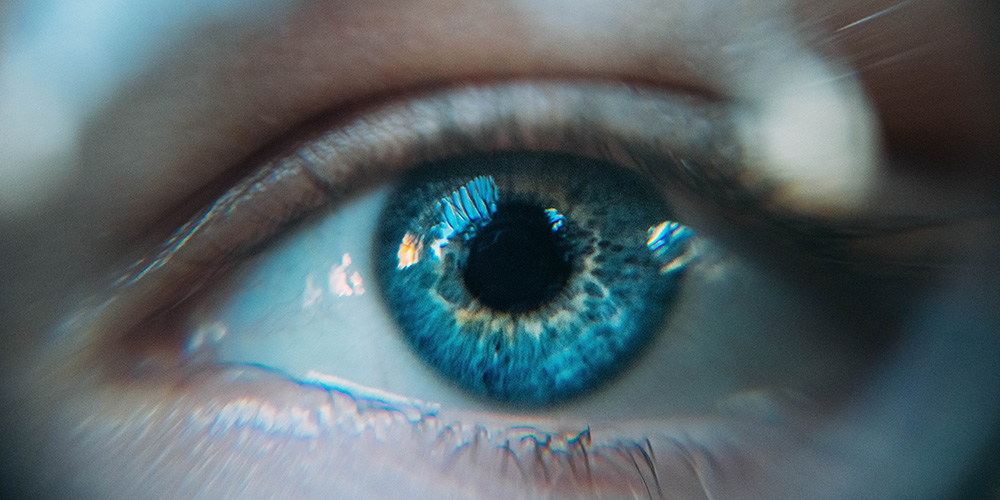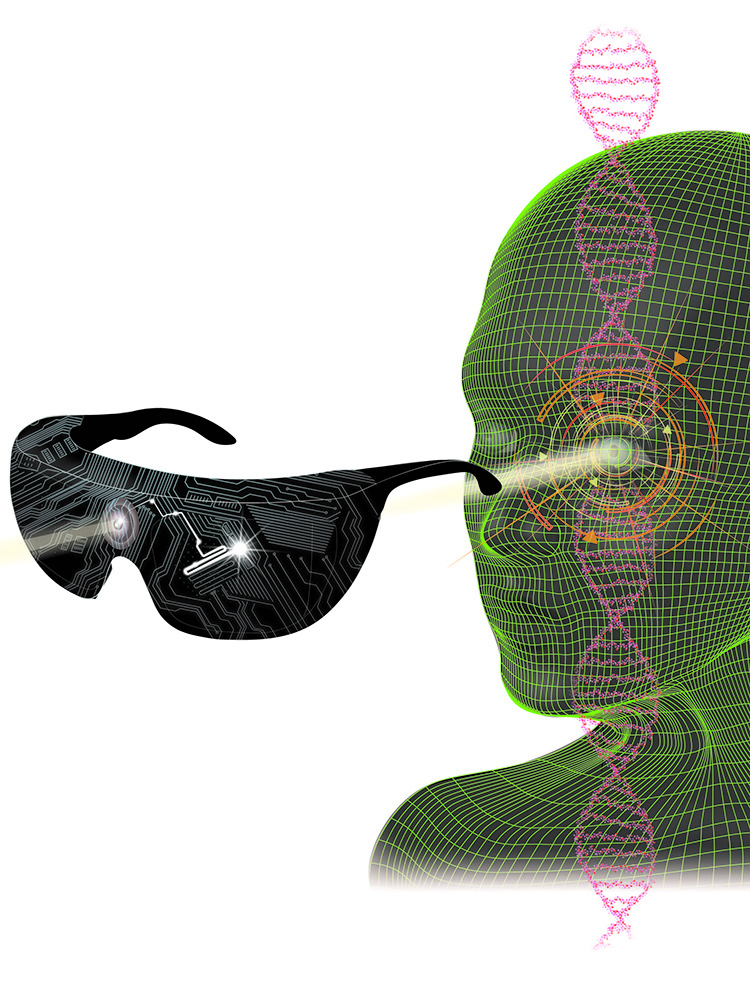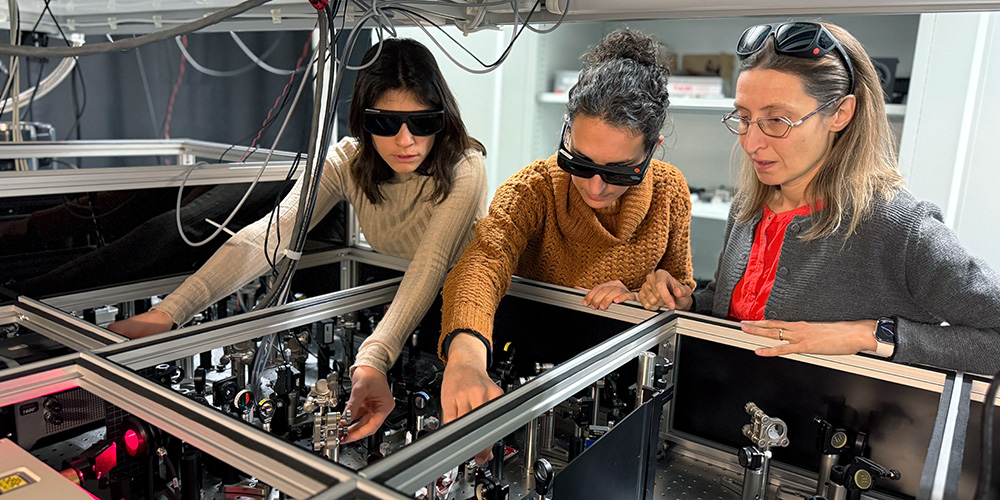Gene therapy restores partial vision to a blind patient
A blind patient has partially regained visual function. This was achieved through optogenetic therapy, which aims to treat inherited diseases of the photoreceptors within the eye. The accomplishment by the international research team represents an important step in the treatment of genetically determined blindness.
24 May 2021
When people go blind, it is often the result of an inherited disease of the photoreceptors in the eye. Photoreceptors are light-sensing cells in the retina that use proteins called opsins to convert light into electrical impulses and deliver visual information from the eye to the brain via the optic nerve. In many inherited retinal diseases, however, the photoreceptors degenerate, resulting in the loss of vision in the person affected.
For over ten years, researchers led by Professor Botond Roska of the University of Basel, founding director of the Institute of Molecular and Clinical Ophthalmology Basel (IOB), and Professor José-Alain Sahel of the University of Pittsburgh have been working on the treatment of this kind of inherited blindness. The field of optogenetics has been at the heart of this.
Light-sensitive proteins
Optogenetics involves genetically altering cells so that they produce light-sensitive proteins. It has now produced promising results in the treatment of a patient who had become completely blind due to the inherited disease retinitis pigmentosa. The researchers have reported on it in the journal Nature Medicine. “The findings provide proof-of-concept that using optogenetic therapy to partially restore vision is possible,” says Roska.
To restore the light-sensing capability in the patient’s retina, the researchers delivered certain genes into the retina’s ganglion cells to make them produce the light-sensitive protein ChrimsonR. This particular protein senses amber light, which is safer for retinal cells than the blue light used for other types of optogenetic research. The team also developed specialized goggles outfitted with a camera that captures and projects visual images onto the retina at amber light wavelengths.
Training with the goggles began nearly five months after the patient received the gene therapy, thus giving the production of the protein ChrimsonR time to stabilize in the retinal cells. Seven months later, the patient began reporting signs of visual improvement.
Patient could locate objects
The patient was able to locate, touch and count objects on a white table placed in front of him, but only with the aid of the goggles. Without the goggles, he was unable to perform these exercises. Another test involved perceiving, locating and then touching a large notebook or a smaller staple box. The patient touched the notebook during 36 of 39 separate evaluations (in other words, 92% of the time), but could pick out the smaller staple box only 36% of the time. In a different test, the patient correctly counted glass tumblers on the table 63% of the time.
In further tests, the patient had to press a button indicating whether a tumbler was present or absent on the table in front of him. During this, he wore a skull-cap with electrodes that took non-invasive electroencephalography (EEG) readings of his brain activity. Evaluations of the EEG readings showed that the activity in the visual cortex of his brain changed according to whether the glass was present or not. This enabled the researchers to confirm that the brain activity was indeed related to a visual object and that the retina was thus no longer blind.
Functional optic nerve as a precondition
As José-Alain Sahel points out, this kind of treatment for blindness will only be worth considering for patients with a functional optic nerve who have lost their vision as a result of various types of neurodegenerative photoreceptor disease. “It will, however, take time until this therapy can be offered to patients.”
The international team of researchers included members of the IOB, the Institut de la Vision and Hôpital National des Quinze-Vingts in Paris, the University of Pittsburgh, StreetLab and GenSight Biologics.
Original publication
José-Alain Sahel et al.
Partial recovery of visual function in a blind patient after optogenetic therapy
Nature Medicine (2021), doi: 10.1038/s41591-021-01351-4
Further information
See the press release by the IOB.




